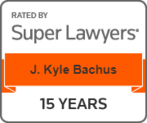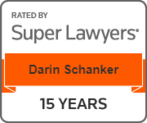- What is considered a "catastrophic injury" in Fort Collins?
- Common types of catastrophic injuries
- Common causes of catastrophic injuries
- What are the long-term effects of catastrophic injuries?
- How to prove negligence in a catastrophic injury claim
- Damages that may be available in a catastrophic injury claim in Fort Collins, Colorado
- How are catastrophic injury settlements paid out in Fort Collins?
- What is the statute of limitations to file a catastrophic injury claim in Fort Collins?
- How can a catastrophic injury lawyer help me?
- Fort Collins premier catastrophic injury lawyers
- You Deserve Fair Compensation
What is considered a “catastrophic injury” in Fort Collins?
The term “catastrophic injury” doesn’t necessarily have one proper meaning. It covers a large range of injuries that are typically life-altering, leaving the victim suffering immensely. Catastrophic injuries typically prevent the victim from living a normal life, which in turn results in loss of income, loss of enjoyment of life, and intensive medical treatment.
Common types of catastrophic injuries
The following injuries are commonly considered “catastrophic” for the purposes of personal injury cases:
- Traumatic brain injuries or other head injuries
- Injuries that cause severe scarring or disfigurement
- Burn injuries
- Spinal cord injuries
- Loss of a limb
- Any injury that results in long-term or permanent disability
Common causes of catastrophic injuries
Some of the most common causes of catastrophic injuries include:
- Slip and fall accidents
- Motor vehicle accidents
- Work-related accidents
- Pedestrian accidents
- Medical malpractice
- Dog bites and animal attacks
- Defective product injuries
The catastrophic injury attorneys at Bachus & Schanker are professionally trained to handle any such cases.
What are the long-term effects of catastrophic injuries?
The long-term effects of a catastrophic injury can be devastating. These injuries can be completely debilitating to the victims as well as their families. It can be beneficial to all involved if the family schedules a meeting with the victim’s medical care provider to discuss care plans. Suffering from a catastrophic injury can have both short and long-term impacts on the victims, often preventing them from ever returning to work and requiring family members to step in as permanent caregivers.
The traumatic impact these injuries can have on the victims is why it’s important to have an attorney that can seek justice on behalf of the victim as well as financial relief for the lasting strains caused by catastrophic injuries.
How to prove negligence in a catastrophic injury claim
Proving negligence in a catastrophic injury claim is essential for success. Four elements must be satisfied to establish negligence in a personal injury case:
- Duty of care: Everyone has a legal duty to others in which they must act reasonably to avoid injuring other people. If a person fails to meet this duty, they will likely be held liable for any injuries that may arise from their actions. The duty to act reasonably and not cause harm to others is the standard duty of care that everyone must respect; however, certain professions require a higher duty of care, such as attorneys and physicians. By establishing whether there was a duty of care, the victim can prove the first element of negligence necessary to be successful in a catastrophic injury case.
- Breach of duty: A party may breach their duty of care by failing to act reasonably — also known as acting negligently. By creating a dangerous situation, a party thus breaches their duty of reasonable care to others. Demonstrating this breach will allow a plaintiff to successfully prove this second element of negligence.
- Causation: After a duty has been breached, it’s important to be able to prove that, had the party not acted negligently and breached their duty of care, the plaintiff would not have suffered any injuries. Being able to prove causation is an essential part of a negligence claim because it allows the plaintiff to prove that the defendant is at fault for the catastrophic injuries.
- Damages: This final element of negligence takes into consideration what the plaintiff may be compensated for as a result of the defendant’s negligent breach of duty and failure to act with reasonable care.
Once these four elements of negligence have been established, it’s likely the plaintiff will have a strong lawsuit against the defendant regarding their catastrophic injury claims. The catastrophic injury attorneys at Bachus & Schanker are highly trained in proving negligence in personal injury cases and can help you determine whether you are capable of satisfying these four elements in your catastrophic injury lawsuit.
Damages that may be available in a catastrophic injury claim in Fort Collins, Colorado
Damages in a personal injury case refer to the compensation that is to be paid to the injured party by the party found legally responsible for causing the incident. Different types of damages may arise in a personal injury claim, as there are many factors to consider.
If you’re looking to file a catastrophic injury claim, it’s important to understand damages and what you may be compensated for. The following are the standard types of damages in a catastrophic injury lawsuit:
- Pain and suffering: This covers any discomfort or pain you may have endured as a direct result of the incident. This may include any pain directly after the accident occurred or any ongoing pain well after the incident that stems from the incident itself.
- Emotional distress: In addition to pain and suffering, it’s not uncommon for accident victims to suffer from emotional distress. Emotional distress damages compensate the victim for the psychological effects they have suffered from the accident. This often includes anxiety, loss of sleep, and fear.
- Loss of income: Severe accidents have a strong likelihood of causing victims to suffer a loss of income due to their inability to continue working. Many personal injury cases require the plaintiff to be compensated for both the money they have lost as a result of the accident and any future income they would likely have earned had it not been for the accident preventing them from continuing to work.
- Medical expenses: The most self-explanatory type of damages in a personal injury case is medical expense. The defendant must compensate the plaintiff for any medical expenses they have incurred as a result of the defendant’s negligence. In catastrophic injury cases, medical expenses are usually quite costly, meaning the plaintiff may expect to be highly compensated for their medical bills.
In catastrophic injury cases, damages can be broken down into economic and non-economic damages:
Economic damages
- Past medical expenses
- Future medical expenses
- Rehabilitation costs
- Medical equipment
- Home modification or accommodation costs
- Pre-tax value of past wage loss
- Pre-tax value of future wage loss
Non-economic damages
- Pain and suffering
- Loss of enjoyment of life
- Mental anguish
- Inconvenience
- Physical impairment
- Disfigurement
The catastrophic injury attorneys at Bachus & Schanker can walk you through the differences in these types of damages and will let you know which ones you likely will be compensated for.
How are catastrophic injury settlements paid out in Fort Collins?
Catastrophic injury settlement funding provides a convenient way for plaintiffs to get paid for their catastrophic injury claims without having to worry about any risks. Catastrophic injury settlement funding is a no-risk advance on the expected proceeds of a lawsuit. The purpose is to allow the victim to get the cash that they need to meet basic needs as they wait for the resolution of their case.
With catastrophic injury settlement funding, the lender advances an amount of cash to the victim. The victim then repays the lending company from the proceeds of their settlement when they receive it. It is possible to receive your payment as quickly as two days after settling.
What is the statute of limitations to file a catastrophic injury claim in Fort Collins?
A statute of limitations is a state’s time limit for a plaintiff to file a lawsuit. This allows lawsuits to be filed in a timely manner while evidence can be easily gathered and incidents are still fresh in everyone’s minds.
In Colorado, the statute of limitations in a personal injury case is two years, meaning a catastrophic accident victim only has two years after the accident to file their catastrophic injury claim. The statute of limitations usually begins at the date of harm, but may also begin when the plaintiff discovers the harm.
How can a catastrophic injury lawyer help me?
Suffering from a catastrophic injury can be an incredibly stressful experience and put a toll on you both physically and mentally. Retaining a catastrophic injury lawyer can help guide you through this difficult time and, hopefully, obtain high financial compensation from the negligent party. By handing the legal aspects over to an experienced professional, you and your family can focus on healing.
Do I have a case?
If you’re wondering whether you have a catastrophic injury case, it’s important to meet with a catastrophic injury lawyer and discuss the details of your injuries and the incident which caused them. Trained catastrophic injury attorneys, such as the ones at Bachus & Schanker, are able to recognize whether a case is worth trying and whether the plaintiffs have a strong enough chance at winning. These attorneys will evaluate any medical records, accident reports, insurance records, and other documents to determine if your case will be viable within the jurisdiction.
Catastrophic injury case management
The experienced legal team at Bachus & Schanker has exceptional case management abilities. The attorneys and other members of the legal team are always available to help clients, and we maintain your records with dignity and respect. If you’re wondering what you should expect regarding case management of your catastrophic injury claim, be sure to ask the attorney at your free case consultation.
Catastrophic injury lawsuit timeline
The timeline for a catastrophic injury lawsuit is similar to the timeline of a personal injury case. While it’s uncertain how long each case may take, they all have similar steps to follow to be accepted in the justice system.
After the accident has occurred and you received medical treatment, it’s important to consult with an attorney as soon as possible. If the attorney decides to move forward with your case, they will prepare the necessary documents to file a summons and complaint against the defendant. Once the summons and complaint have been filed and answered, the discovery phase will begin.
The discovery phase in a personal injury lawsuit often takes a long time because it’s during this part of the case when each party collects the necessary evidence to build their case. Commonly requested documents during the discovery phase include medical records, insurance records, employment records, accident reports, social media records, automobile repair receipts, and more. Each party gathers as much evidence as possible during this time so that they can be prepared for mediation, negotiation, and in some cases, trial.
Mediation and negotiation occur at the close of discovery so that the parties may discuss settlement options with one another. The majority of the time, cases settle during this phase. However, in some situations where mediation and negotiations fail, the parties will move on to try the case in front of a jury. While this may be uncommon, it’s important to note that jury trials can be extremely long, so you want to discuss with your attorney how best to prepare for this should you be faced with a trial.
Fort Collins premier catastrophic injury lawyers
The legal team at Bachus & Schanker understands the complex nuances that come with handling a catastrophic injury lawsuit. We are here to guide you through this stressful process. Retaining one of our Fort Collins catastrophic injury lawyers will help ease the burden of your catastrophic injury case and will likely result in you being justly compensated for your damages.
Sources:
Goguen, D. (2023). Can I Get Compensation for a Severe or Catastrophic Injury?
Goguen, D. (2023). Personal Injury Case Timeline.
Goguen, D. (2023). Personal Injury Damages and Compensation.
Goguen, D. (2023). Proving Negligence In a Personal Injury Case.
Suszek, A. (2023). What is the “Duty of Care” in Personal Injury Law?
You Deserve Fair Compensation
Don’t let the insurance companies intimidate you into accepting less than you deserve. We’re ready to fight for you.







